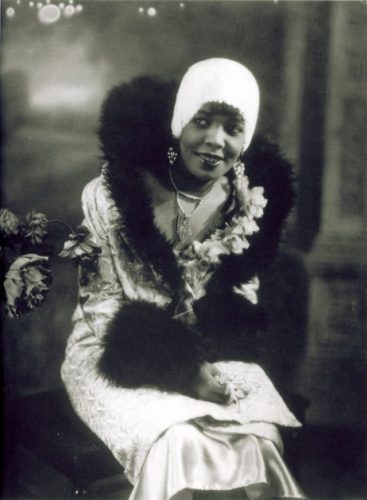Many people consider fashion to be the clothes they wear. But it’s more than that.
It’s a statement that speaks about a person’s history and identity. And this is what the world of black fashion is about. African American fashion has significantly evolved in unexpected and fantastic ways.
So, read this article to learn about the journey of black fashion from humble beginnings to sophisticated looks.

Credits: @flickr / Pinterest
Key Takeaway
- Black fashion in the 1920s was more than just clothing; it was a bold statement of cultural identity, self-expression, and empowerment in the face of racism and discrimination.
- The “New Negro Woman” emerged, challenging traditional roles and using fashion as a tool for advocacy, while the New Negro Movement promoted self-determination and racial solidarity through fashion choices.
- 1920s fashion trends prioritized comfort, mobility, and individuality, with iconic styles like flapper dresses, wool suits, and accessories such as cloche hats and Art Deco jewelry.
- The legacy of 1920s black fashion continues to inspire contemporary African American designers and fashionistas, highlighting the black community’s creativity, resourcefulness, and resilience in the face of adversity.
Overview
In the roaring 1920s, black fashion wasn’t just about clothes—it was a bold statement that shaped an entire era. Imagine designers like magic-makers, conjuring up fresh styles like the iconic flapper dress that dazzled the world.
But for African Americans, fashion was more than just looking good; it was a fierce declaration of cultural identity in the face of rampant racism and discrimination.
Picture Harlem buzzing with energy, where the Great Migration brought together folks from all walks of life.
Here, the Harlem Renaissance sparked a vibrant cultural revolution, celebrating black heritage through fashion.
Despite facing hardships and limited resources, black individuals got inventive, turning old clothes into fashion statements and embracing bold fabrics as acts of defiance against racism, every stitch a symbol of cultural pride.
The Rise of the New Negro Woman
In the 1920s, the term “New Negro Woman” emerged alongside the broader concept of the New Negro, reflecting how African American women wanted to present themselves to society.
They challenged traditional roles by pursuing education and careers and making strides in teaching and medicine. Their fashion choices reflected this newfound independence, with stylish yet practical attire signaling their determination.
Embracing self-expression, black women sported bobbed hairstyles, makeup, and shorter hemlines, pushing back against societal norms.
Despite facing racism and sexism, they used fashion as a tool for advocacy, participating in community organizations and choosing attire that symbolized their fight for equality and inclusion.
Influenced by the burgeoning Civil Rights Movement, African Americans used fashion to resist discrimination and embrace cultural pride. They rejected imposed beauty standards, opting instead for individualism and African-inspired designs.
The New Negro Movement promoted self-determination and racial solidarity, reflected in fashion choices that celebrated Pan-African identity and encouraged acceptance of one’s skin color and personality.
Fashion Trends of the 1920s

Credits: @vintageeveryday / Pinterest
Fashion in the 1920s, known as the Roaring Twenties, prioritized comfort and mobility for dancing. Designers drew inspiration from the Art Deco Movement, showcasing bold colors and geometric patterns.
Women broke traditional barriers by incorporating menswear elements like ties and waistcoats, promoting gender equality and inclusivity.
Dresses
Low-cut necklines and shorter hemlines
In the 1920s, low-cut necklines and shorter hemlines were all the rage, particularly for black women. These styles symbolized newfound freedom and confidence during this era.
Low necklines featured strapless or scoop designs, sometimes dipping low in the back, often adorned with decorative beading or fringe.
Black women embraced shorter hemlines, reaching just below the knee or higher, allowing them to move and groove to the dances of the time, such as the Charleston.
Flapper Dresses
Flapper dresses are an iconic symbol of the 1920s. Black women loved them to be short, loose, and in bright colors. They used them to express their newly found freedom and mobility.
Elegant Cocktail Dresses
Although flapper dresses were popular, many women embraced elegant cocktail dresses, especially for special occasions. These dresses often included straight silhouettes that showcased a woman’s curves closely and were designed using satin, silk, or velvet fabric. The dresses were worn during social gatherings and special events like jazz clubs, formal dinners, etc.
Wool Suits
In the 1920s, men favored wool suits, initially opting for slimmer fits in conservative colors like grey, navy, and brown. As time went on, they shifted towards looser, more relaxed styles, embracing bold colors, patterns, and stripes.
Dress shirts, often white with detachable collars, were a staple. Men added personal flair with colorful and patterned ties and customizing suits to reflect their individuality.
Accessories and Jewelry

Credits: @yeye1mpiganaji / Pinterest
Cloche Hats
Often bell-shaped, almost everyone owned these hats. They covered most of the forehead and were decorated with beads, jewels, or feathers.
Art Deco Jewelry
Art Deco jewelry included geometric patterns and bold colors. Beaded necklaces, bangles, and chandelier earrings were popular fashion trends among ladies. Men, on the other hand, used pocket watch chains, tie clips, and cufflinks.
Gloves
Gloves formed part of the fabulous fashion of the era, especially among women. You could spot black people wearing long elbow-length gloves on formal occasions and shorter gloves for everyday wear. Men wore gloves made of leather or wool.
Regional Variations in Fashion Trends Between the North and South
In the 1920s, a national fashion movement brought about revealing and relaxed styles, but differences between the North and South of the United States emerged.
In the North, cities like New York and Chicago were fashion hubs influenced by European and Hollywood trends, leading to the quick adoption of new styles. With a focus on leisure and nightlife due to a booming economy, Northern fashion embraced these changes eagerly.
Meanwhile, the South remained conservative, with longer hemlines and modern silhouettes. The predominantly agricultural economy influenced practical fabric choices like linen and seersucker, which are suited for the region’s hot weather.
Materials Used in Clothing Production and Their Significance
Materials used in the 1920s fashion were influenced by evolving styles and had economic and social significance. Some key materials include:
- Silk and satin were used for dresses, especially evening wear. Their sheen and luster reflected the glamor of this era
- Rayon is artificial silk, which allows many people to embrace fashion trends because of its affordability.
- Feathers and beards were used to add drama and theatricality to clothes.
- Wool was a popular choice for men’s suits and outwear. The material was durable and could be worn all year round.
Other materials include fur, straw, and felt. The Jazz Age incorporated prints, patterns, and styles inspired by African culture thanks to movements like the Harlem Renaissance and Great Immigration.
Empowerment through Fashion
In the 1920s, black fashion emerged as a powerful tool of empowerment. Clothing became more than just fabric; it became a canvas for expressing individuality and cultural pride.
Despite facing societal barriers, African Americans boldly challenged norms through their fashion choices, carving out space for themselves in a predominantly white industry.
For black individuals, fashion was not merely about looking good—it was about reclaiming identity and dignity in the face of discrimination. Every garment, from dapper suits to elegant dresses, symbolized resilience and defiance against racial oppression. In a society that sought to diminish their worth, black fashionistas used style as a weapon of self-expression and empowerment.
Yet, the road to sartorial freedom was fraught with challenges. Discrimination permeated the fashion industry, limiting opportunities for black designers and models.
Despite these obstacles, African Americans persevered, using fashion as a platform to advocate for equal rights and representation.
Their creativity and determination transformed the runway into a battleground for social justice, proving that style knows no bounds when fighting for equality.
The Legacy of 1920s Black Fashion

Credits: @pinkvickyy / Pinterest
Flapper dresses featuring a loose silhouette and shorter hemline were a popular trend used for the Charleston dance and other dances and were loved by the black communities. Also, many people embraced the zoo suit, which featured wide legs and a high-waisted jacket.
Black performers mostly used it to symbolize rebellion and individuality. Today, we still see these styles among contemporary African American designers, and people have made it their everyday wear.
Society needs to acknowledge and celebrate the contributions made by black women in the fashion industry. That way, they can highlight the creativity and resourcefulness experienced by these women even when facing discrimination.
Also, it helps give a complete picture of the evolution of black fashion and inspires future designers and fashionistas.
Conclusion
Black fashion has evolved significantly over the years, progressing from simpler outfits worn by Harlem women to today’s more sophisticated styles. Despite enduring racism and discrimination, black designers’ perseverance inspires future generations to pursue their passions.
Even now, black fashion remains a dynamic and influential force in the industry. The impact of the 1920s is still felt today, with styles like the flapper dress and zoo suit enduring through time.
African American fashion has a deep cultural significance, resilience, and creative heritage. It deserves greater recognition, and society can honor this by continuing to explore and celebrate its diverse history. Whether wearing black fashion or sharing the stories of its trailblazers, it’s vital to acknowledge and honor this rich legacy for future generations.
